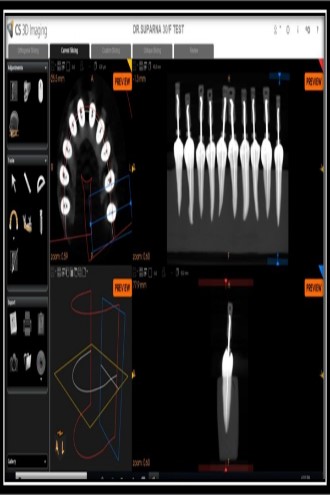Reliability of CBCT in working length determination for successful endodontic treatment- an in vitro study
DOI:
https://doi.org/10.56501/intjorofacres.v6i2.542Keywords:
Cone‑beam computed tomography, Dental radiovisiography, Root canal preparationAbstract
Aim: To evaluate and compare the accuracy of working length determination using Radiovisiography, Cone Beam Computed Tomography and Actual working length of the tooth.
Material and Methods: After the access cavity preparation in seventy- two extracted human single rooted teeth, the working length was measured, using Radiovisiography and Cone beam Computed Tomography and its accuracy was compared with the actual working length of the teeth using surgical loupes. Unpaired ‘t’ test was used to test the significance of difference observed in mean working length measurements.
Results:. The difference in distribution of readings was found insignificant (p<0.75) by Chi square analysis. The result showed that cone beam computed tomography working length had high percentage of accurate readings as compared to radiographic working length readings. The results also showed high Karl Pearson’s correlation coefficient between the actual working length, radiographic and CBCT working length.
Conclusions: Cone beam computed tomography (CBCT) imaging is as accurate and valuable adjunct as the actual working length in determining working length.
Clinical Significance: Considering the availability of CBCT and its wide implication in endodontics, there is a need to explore if CBCT can be used as a tool at par with the actual working length determination in endodontics.
Publication Facts
Reviewer profiles N/A
Author statements
Indexed in
- Academic society
- N/A
- Publisher
- MM Publications

Downloads
Published
How to Cite
Issue
Section
License
Copyright (c) 2022 Suparna Kosta, Neelam Chandwani, Pooja Bopche

This work is licensed under a Creative Commons Attribution-NonCommercial 4.0 International License.







